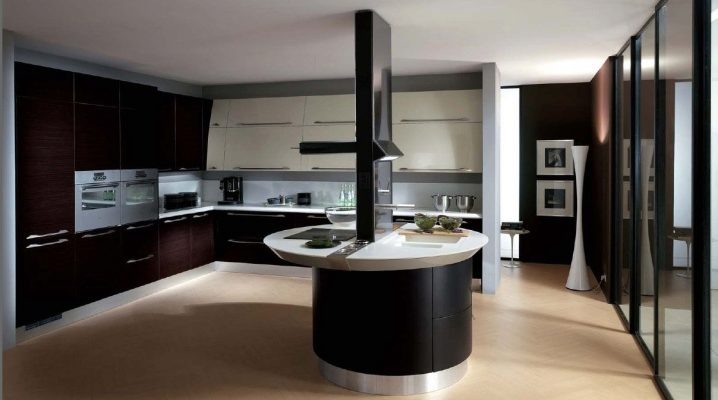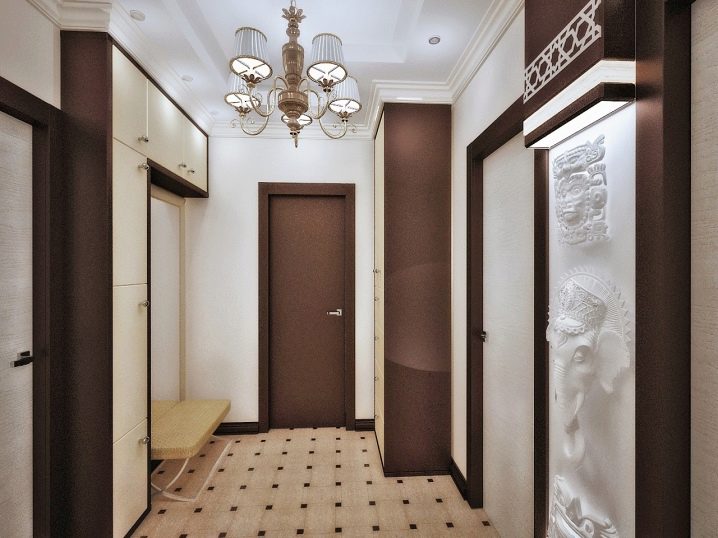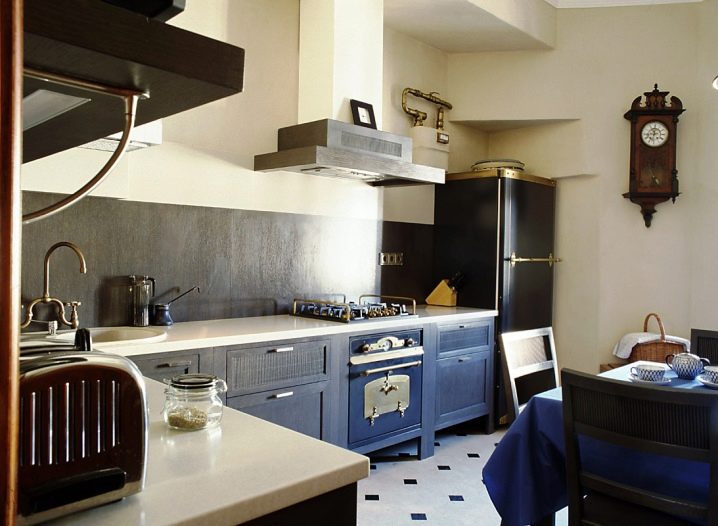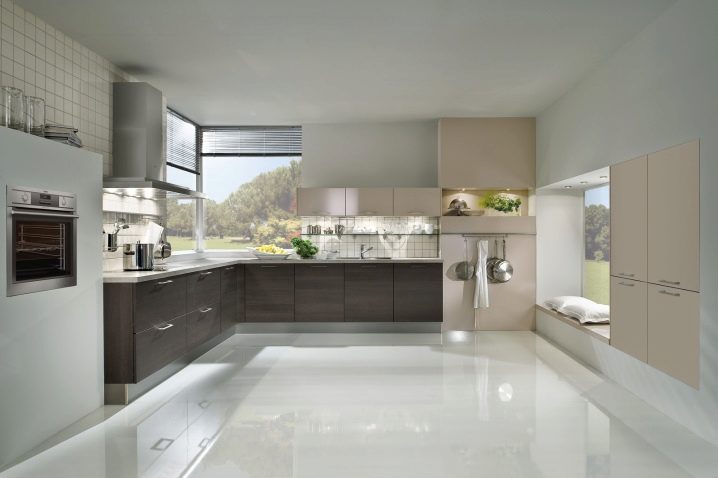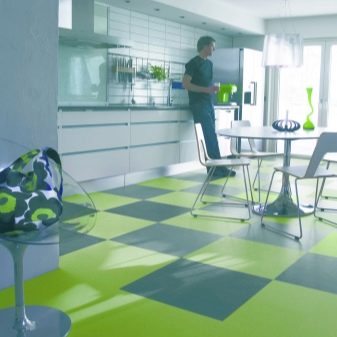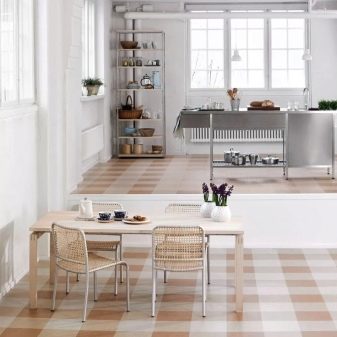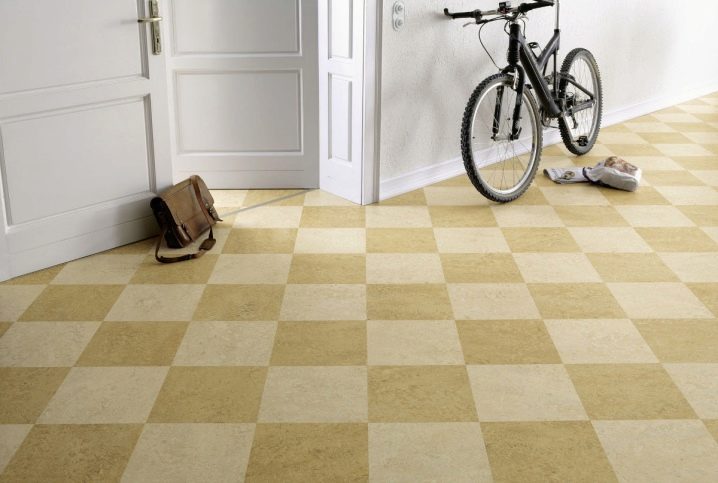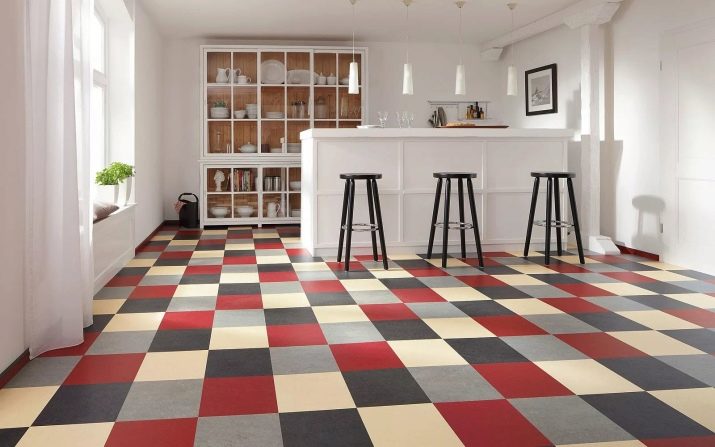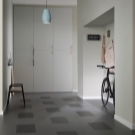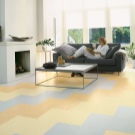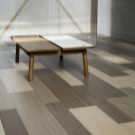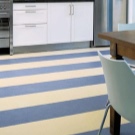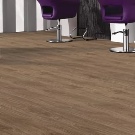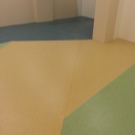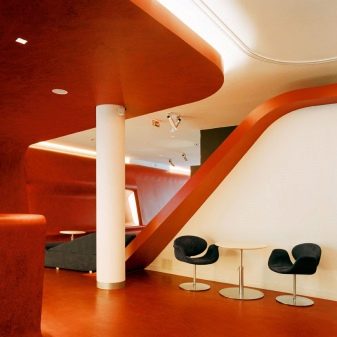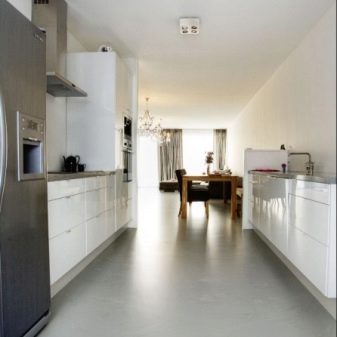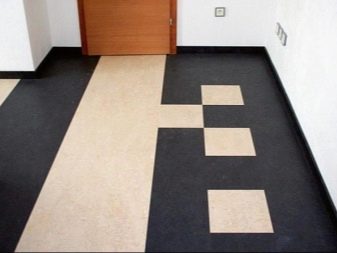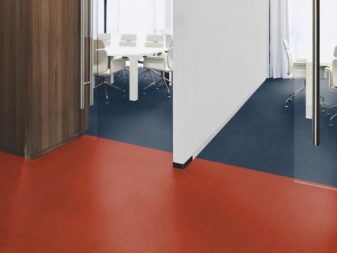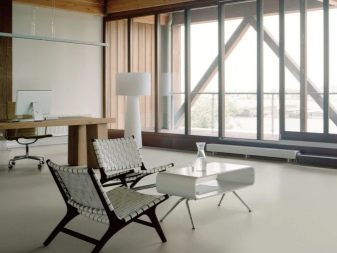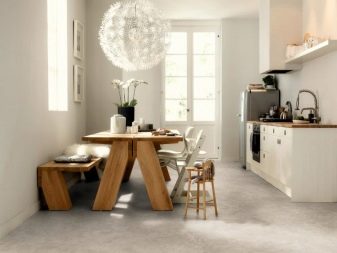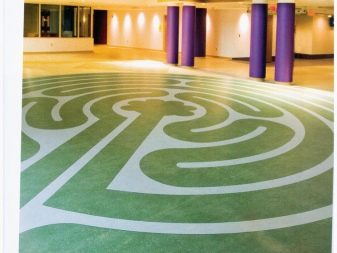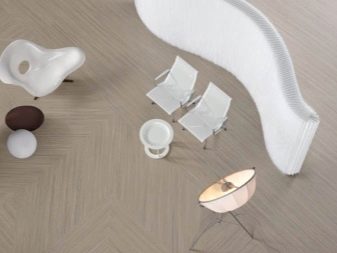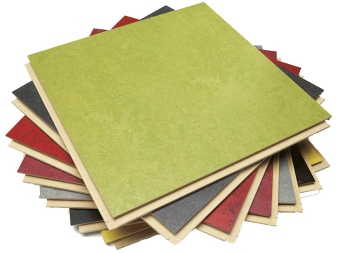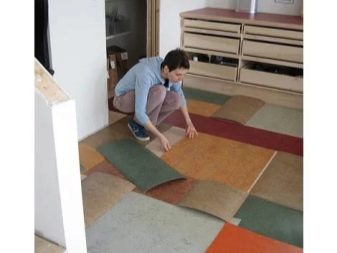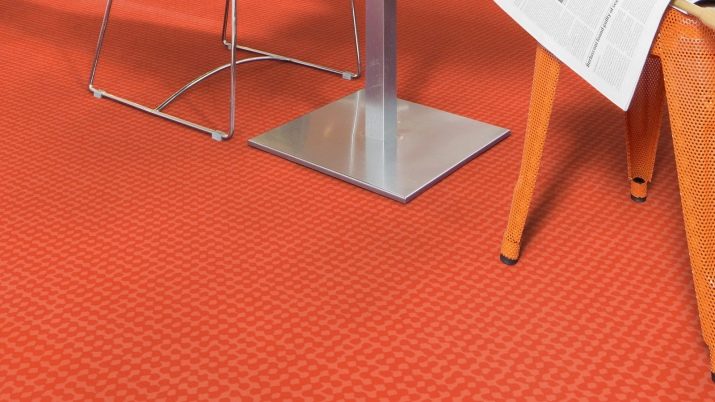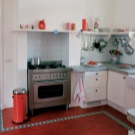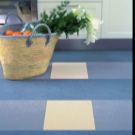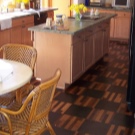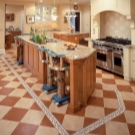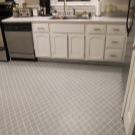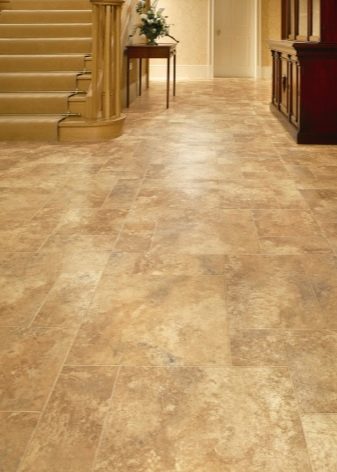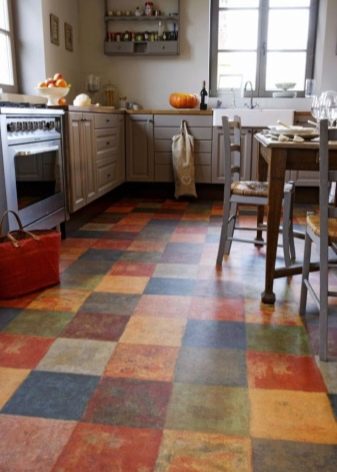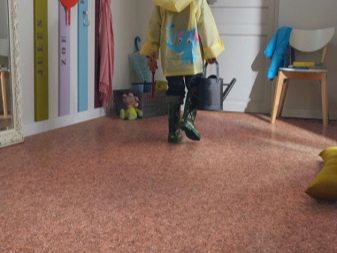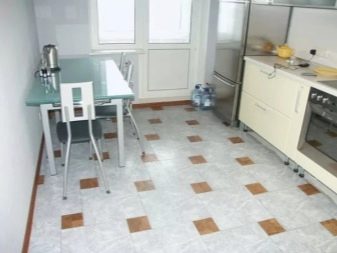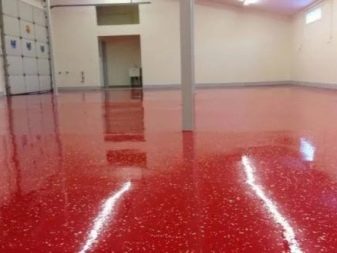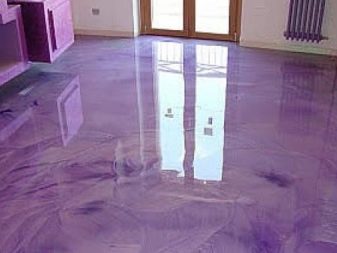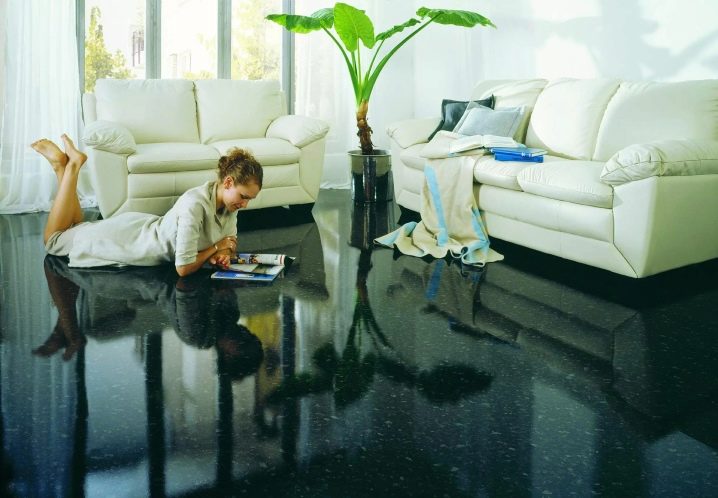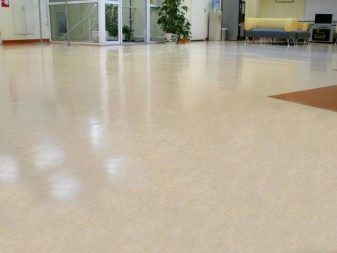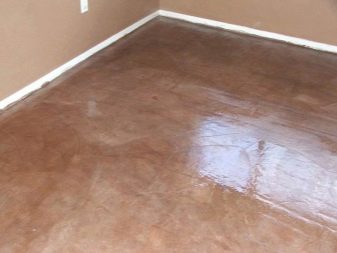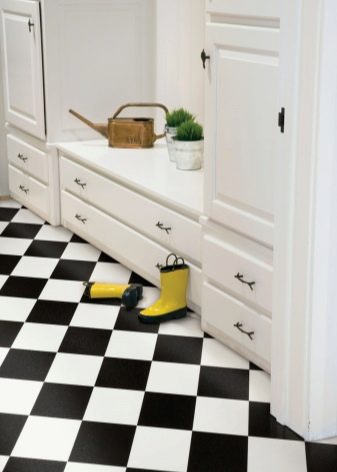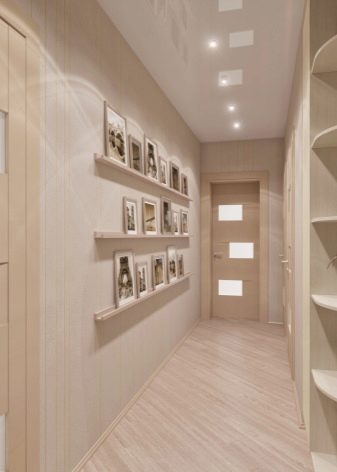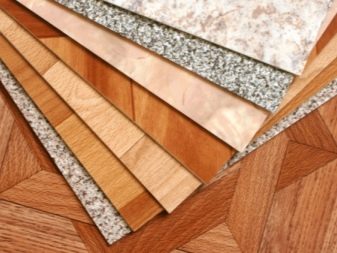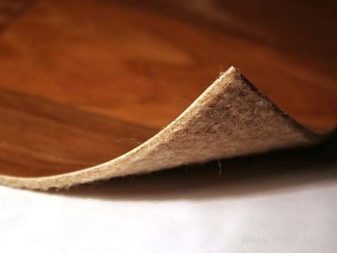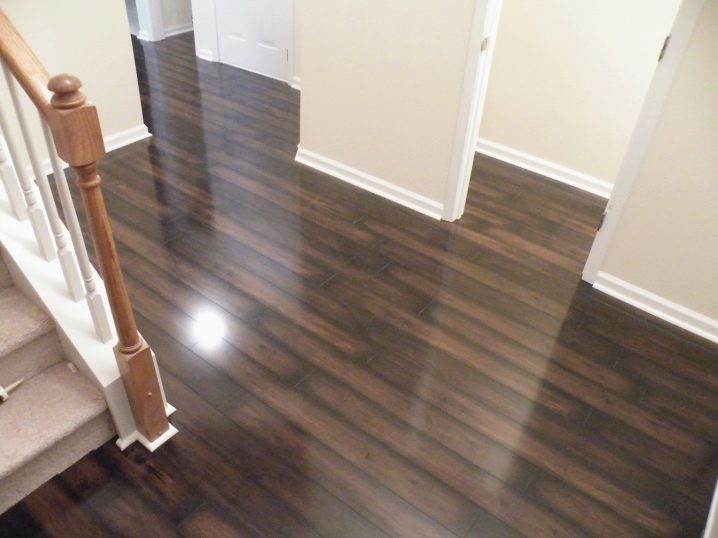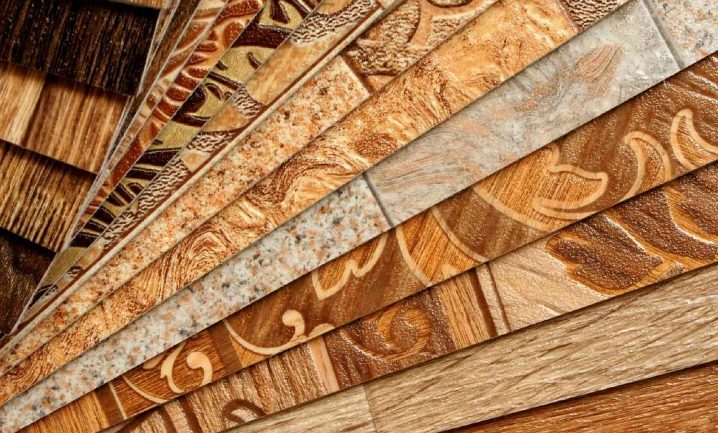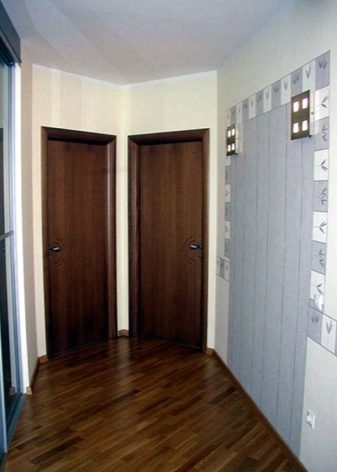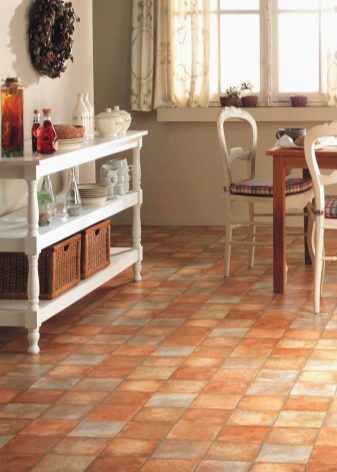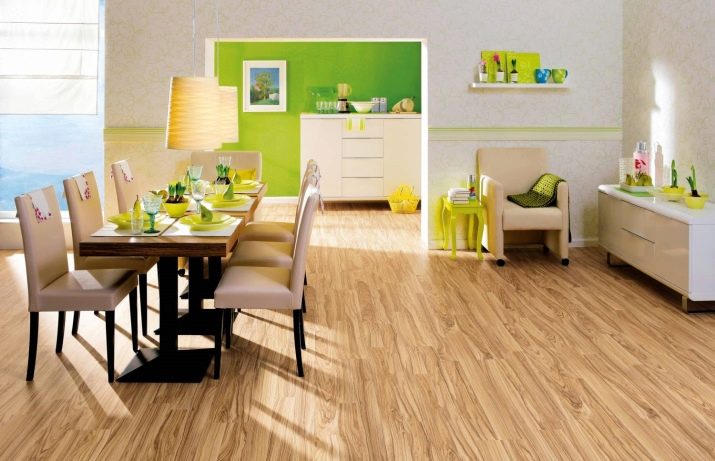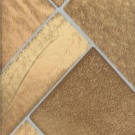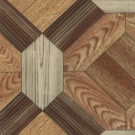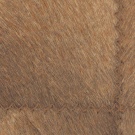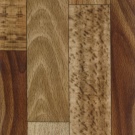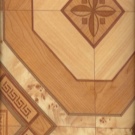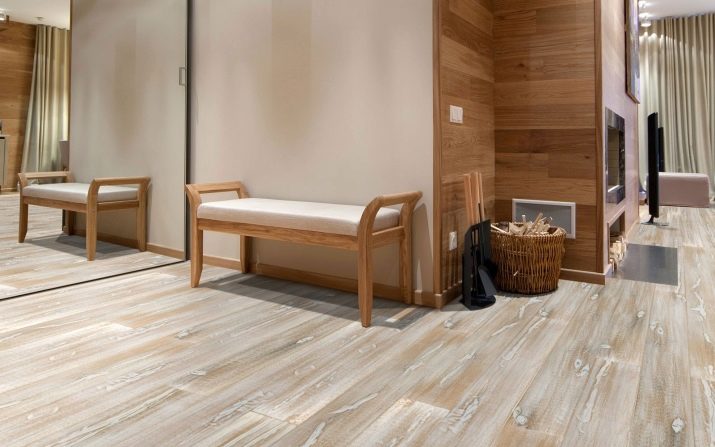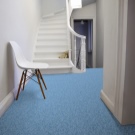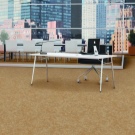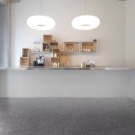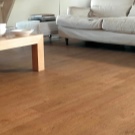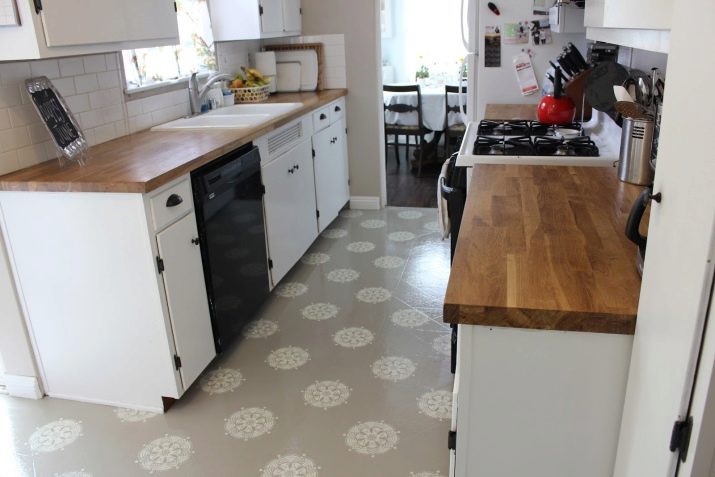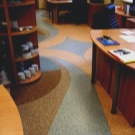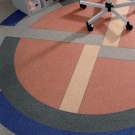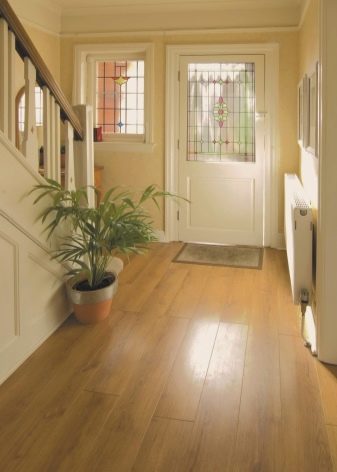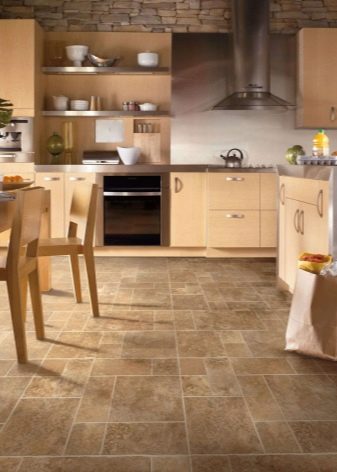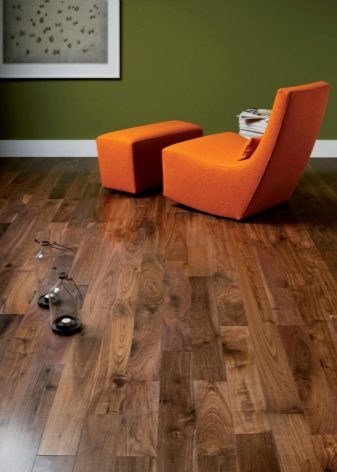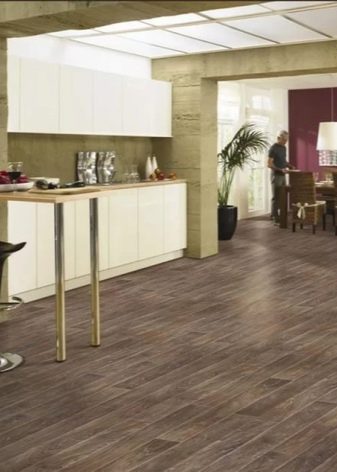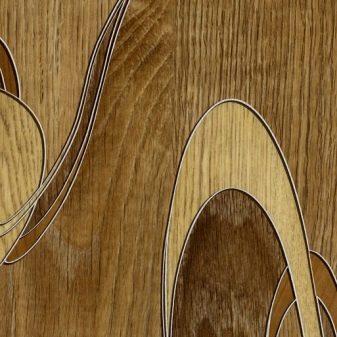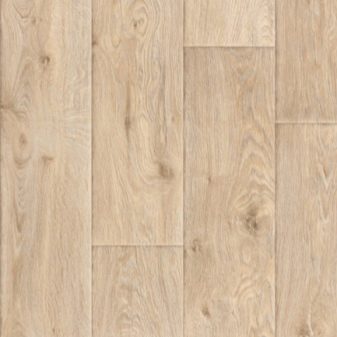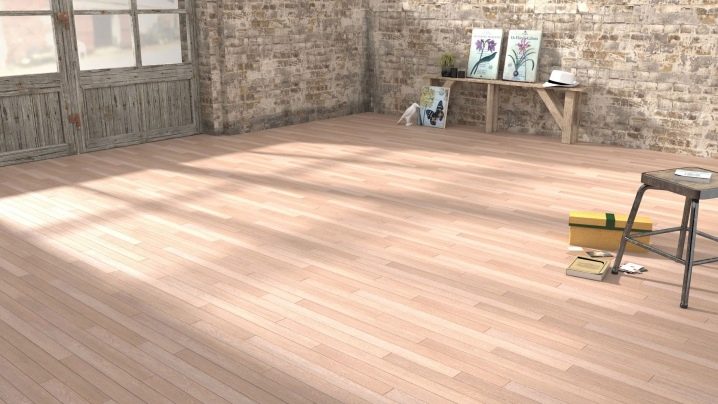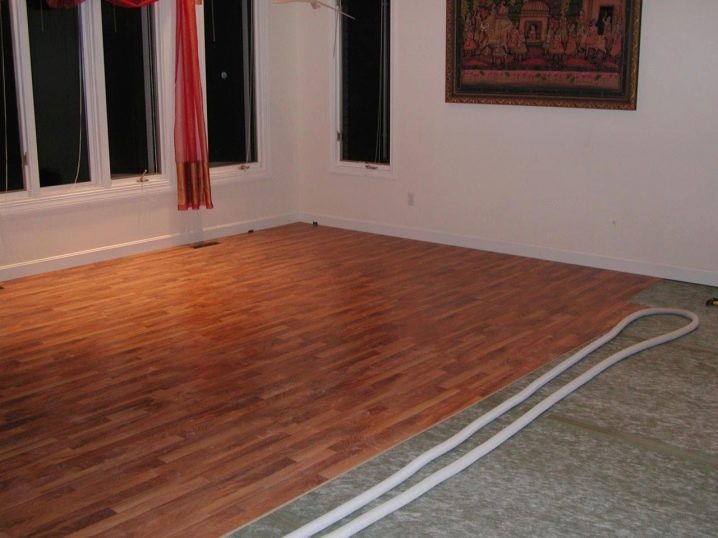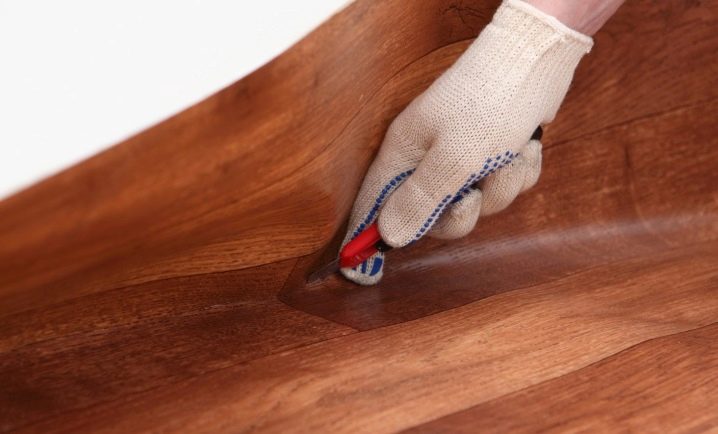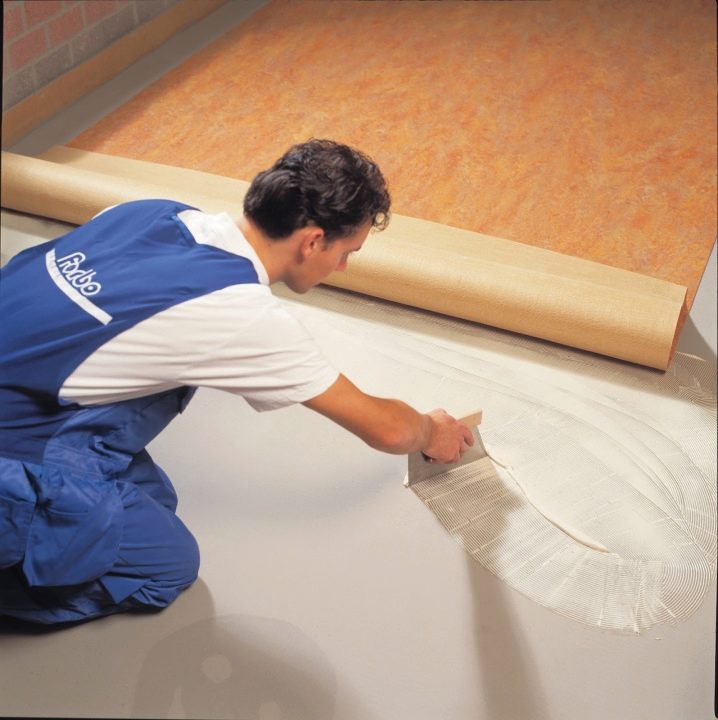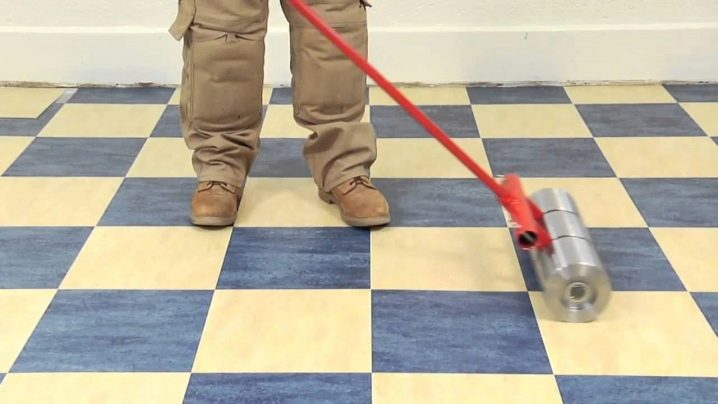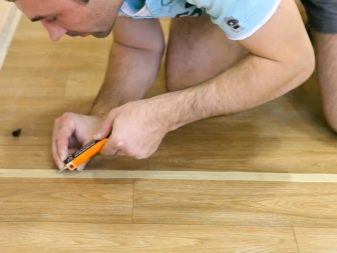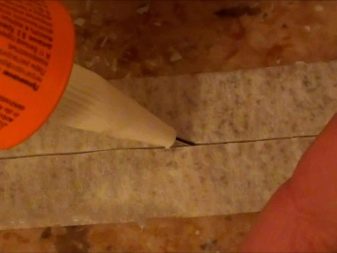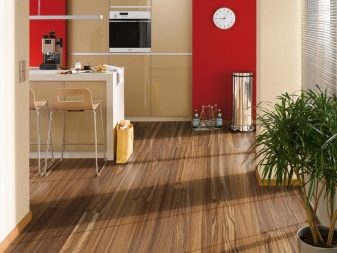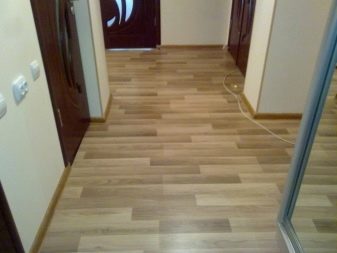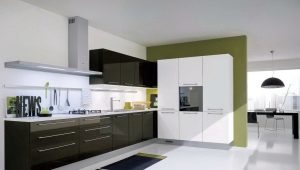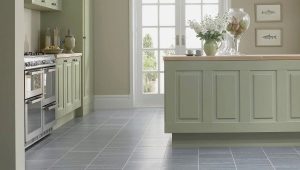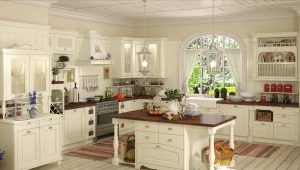How to choose linoleum for the kitchen and hallway
The floor covering in the kitchen and in the hallway must meet certain parameters: not to be afraid of moisture, to have high strength, to be durable and resistant to household chemicals (floors in these areas are washed most often and with the use of aggressive agents), do not slip. All these criteria corresponds to linoleum.
Linoleum is a floor covering that is made from polymeric or natural materials, it is durable, flexible, moisture-resistant, it is also easy to install and is much cheaper in relation to tile or laminate. The average life of a properly selected linoleum in the kitchen is at least 10 years.
Natural, liquid or polyvinyl chloride?
Since the kitchen is a room with high permeability and relatively high humidity (compared to living rooms), the choice of linoleum is limited to three types: polyvinyl chloride (baseless and foamed), liquid and natural (without base).All three have certain advantages and disadvantages, but they all meet the basic requirements: hygroscopicity, strength, durability.
Natural Linoleum
Natural linoleum is the most eco-friendly. Its top layer is made from natural materials: oils (hemp, linseed), resins (pine resin), wood (wood flour), minerals (lime powder) and natural dyes. Such linoleum can be both on the basis and without it. As a base fiber is used from flax, hemp or jute.
Advantages of natural linoleum:
- high wear resistance class;
- does not burn;
- resistant to abrasion;
- does not accumulate static electricity;
- does not break and does not crumble in heated premises;
- does not change color;
- resistant to acids and alkalis;
- combined with warm floors of any type;
- no odor.
Cons of natural linoleum:
- very expensive;
- It is not intended for unheated rooms (it crumbles and cracks), therefore it is not suitable for summer kitchens and kitchens in country houses without heating;
- if luteum is based on jute or felt, then it may be prone to mold and rot.
How to choose natural linoleum
In the flooring market, the company takes the first place in the production of natural linoleum Forbo (70% of turnover), go after it Tarkett and DLW.
Ruler Forbo Marmoleum Real is a marbled linoleum, which is great for the kitchen and hallway, because it hides pollution due to its pattern.
In collection Marmoleum fresco the colors imitating old floor frescoes are presented.
If you want a single-colored floor, then choose a collection. Marmoleum Walton.
Marmoleum artoleum represents linoleum on which surface the relief pattern is applied.
If you decide to buy linoleum from another manufacturer, then check its quality in a simple way - bend a corner and bend it in half. On the front side should not be white stripes. If the strip remains, then there is a lot of lime in the composition, which means there are fewer other ingredients that affect the quality than is required.
Polyvinyl chloride linoleum
PVC linoleum is suitable for kitchen on a foam base or without it; the felt base is not suitable for this room.
Groundless. It has a thickness of up to 3 mm, an average thickness of 1.5 mm. For the kitchen and the hallway is suitable, homogeneous linoleum (when the drawing is applied to the entire thickness of the coating). Its advantage is:
- low abrasion (reducing the thickness of the coating from friction);
- high safety pattern;
- elasticity;
- resistance to chemistry;
- does not accumulate static electricity.
The disadvantages include a narrow range of colors (usually a “marble” pattern or “crumb”), a high cost.
Heterogeneous linoleum without foundation fits the kitchen to a lesser extent. It consists of several layers, the top of which is protective. As a rule, the protective layer on such linoleum is very thin, which leads to abrasion of the pattern for 3-4 years, in addition, it has a high fragility. The advantages of this type include:
- low cost;
- non-removable furniture legs;
- the richest choice of colors (from the classic “board” to the fantasy pattern)
We should also say that if you choose baseless linoleum as a coating on the kitchen, then you should know: it never fits on a concrete base. The floor is leveled under it, filled with mortar and covered with a substrate, which plays the role of a pillow, which conceals sounds and reduces the strength of the mechanical action. If the installation was done correctly, then the baseless homogeneous linoleum in terms of wear resistance, sound and heat insulation will significantly overtake linoleum on a foamed base.A cheap heterogeneous will last about 5-6 years.
On the foam basis. This linoleum is the most popular as a kitchen flooring. The fact is that the base in the form of "foam" gives the linoleum additional cushioning and insulation. It is durable, does not break, traces of heavy objects are aligned with time. Foamed linoleum does not require special preparation of the base, it is enough to level the floor surface and clean it from debris.
Liquid linoleum
Liquid linoleum is a relatively new look to cover the kitchen and the hallway, but it is rapidly catching up with foamed PVC. All thanks to the huge benefits of the liquid base.
Pluses of liquid linoleum as a kitchen covering:
- absolute hygiene (the liquid mixture adheres firmly to the base, after solidification does not leave an air layer and does not create a breeding ground for the bacteria);
- full moisture resistance (such linoleum does not pass moisture to the base - concrete screed, which eliminates the flooding of neighbors, even if the kitchen has burst through the pipe under the sink);
- lack of joints and seams (if you have a large kitchen, then you cannot do without joints,ordinary linoleum has a width of 1.5 to 4 meters. Skatki 1; 4.5 and 5 meters are practically not produced due to the inconvenience of transportation and installation);
- ideally equal, almost smooth surface;
- absolute resistance to fire;
- resistance to chemicals (alkalis and acids);
- frost resistance.
The disadvantages include:
- the absence of any pattern, the floor is monochromatic and glossy. It is possible to diversify the pattern of polyurethane multicolored chips (confetti), then the floor will resemble marble;
- impossibility to carry out laying (pouring) without preliminary experience;
- high price
Universal option
In addition to all the above listed linoleum for the kitchen, in the corridor or the hallway, PVC linoleum on a “felt base” will be suitable.
In fact, the basis of this linoleum is not felt, but a synthetic material that provides the coating with greater elasticity, reduces deformation and increases softness (linoleum is better springy). Synthetic felt necessarily soaked with liquids against fire. This does not eliminate flammability completely, but significantly reduces and localizes the hearth.
Felt allows the floor to keep warm, provides noise insulation, which is very important for the hallway, often children rumble there with sledges, bicycles, skates and just toys.
Felt linoleum is not inferior in almost all characteristics of foam, except for one: moisture resistance. The bottom layer is a waterproofing for a felt base, it copes well with melt water, with a glass of liquid spilled on the floor and even with humidity drops, but you should avoid direct water flowing under the surface of the water. In the hallway a pipe breakthrough with water is unlikely to happen, so this linoleum can easily be laid there.
Household, semi-commercial and commercial linoleum
If you have chosen PVC linoleum as a floor covering in the kitchen and in the corridor, then you should familiarize yourself with all its varieties, which differ in durability.
Household linoleum is the most popular type which keeps within household rooms, including kitchen. It is also divided into certain subgroups according to the level of wear resistance. For example, the usual household economy class has a protective coating of 0.1-0.2 mm and belongs to the wear class 21-23.When operating in off-road conditions, its service life is 3-5 years. Reinforced household linoleum has a thicker protective layer of 0.35 mm. Differs in a huge number of drawings, you can choose both classic and super modern colors, its service life reaches 10 years.
Semi-commercial linoleum is used in rooms with relatively high traffic - offices, boutiques, small hotels. If you are not confused by the "office" colors, then this is an ideal option for the kitchen floor. Semi-commercial linoleum will serve you for at least 15 years, and if it has been laid on a primed and taped base, such a floor will guarantee you protection from leaks to your neighbors, even if an unusual situation with pipes occurred in the kitchen.
Commercial intended for installation in large premises with a high degree of terrain - hospitals, schools, kindergartens. Incompetent or unscrupulous sellers may persuade you to buy it in an apartment, motivating it with its high technical characteristics, but this linoleum is difficult to install, has a high cost and most likely you will just get tired in 10 years (and its service life is about 20 years).
What to look for
Wear resistance class is a technical characteristic that determines the degree of load that linoleum can withstand. On the package is indicated by two numbers: the first number indicates to which type of use the material belongs (2 - household, 3 semi-commercial, 4 - commercial), the second shows the degree of load. Normal household linoleum has a 21-23 wear resistance class, semi-commercial 31-34.
The degree of flammability, which is denoted by the letter "G" and the number from 1 to 4. The lower the value, the lower the degree of fire.
The degree of toxicity is marked with the letter "T" and the numbers from 1 to 4. It shows how linoleum releases harmful substances into the air. In the kitchen and other living quarters, class 1-2 toxicity is preferable.
The abrasion group is how much linoleum loses its thickness during operation. Premium linoleum changes the thickness to no more than 0.08 mm and is marked with a Latin letter “T”, “P” - abrasion by 0.15 mm, “M” - by 0.3 mm, and “F” - 0.6 mm.
Piling
Linoleum should choose a width MORE than the expected width of the kitchen. This is due to the fact that the corners of the rooms only visually look straight, they actually have significant deviations and the room has not a rectangular shape, but a diamond shape.Therefore, at the beginning of the room you may have enough width, but in the end there will be a shortage. Linoleum is produced in increments of 0.5 m.
Purchased linoleum should spend indoors at least 24 hours to adapt to temperature and humidity.
Bases for linoleum (floor) must be prepared in advance. The surface should be free from cracks and chips, dimples and drops. If there is a level offset, then the floor should be leveled with a mixture.
A roll of linoleum need to lay with overlap on the wall and cut along them with a clerical knife. Then he rolls up again in a roll.
For a guaranteed life of linoleum 10 years, it must be glued to the base. To do this, apply a layer of primer with a roller or brush. After - glue recommended by the manufacturer of linoleum (not the one advised by the consultant, but the one advised by the manufacturer. In an extreme case, there should be an icon for compatibility with this brand of linoleum on the glue pack).
After applying a layer of glue, linoleum spins up and smoothes on the front side with a heavy roller.
If you put linoleum with a joint and do not use the method of cold welding, then the masking tape is stuck along the joint,cut through the joint with a knife and glue is poured into the hole. Scotch is needed in order not to stain the surface of linoleum. After 30 minutes, when the glue seizes, the tape is removed.
Dry linoleum should not less than a day.
According to the advice of a specialist for the kitchen and corridor, the best option would be liquid linoleum or household linoleum on a foam base of a class not lower than 23. Commercial linoleum should not be laid in homes. It is quite complex in styling and has a very limited number of colors, mainly blue, gray and red marble chips.
